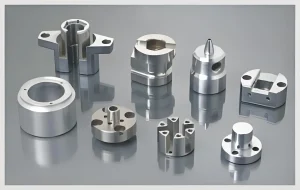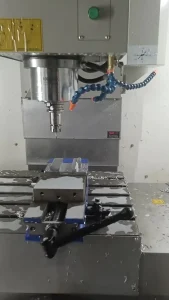In modern manufacturing, plastic deposition molding is changing the traditional appearance of product design and production step by step with its unique creativity. This technology not only allows creativity to be quickly transformed into physical objects, but also greatly enriches the personalized customization space of products. In the following article, let us explore the process of plastic deposition molding and unravel the mystery behind it.

1. Raw material preparation
First, prepare some plastic filaments, which are usually made of thermoplastic materials such as ABS, PLA, etc., which have good melt fluidity and cooling solidification properties. These materials are precisely processed into filaments with consistent diameters, wound in sealed containers, waiting for the following process to be given a new form.
2. Model design
Before plastic deposition molding, designers need to draw a three-dimensional model on the computer. These models include complex mechanical parts and exquisite works of art, which are first conceived and shaped in virtual space. This step is inseparable from the powerful support of computer-aided design software, which allows creativity to be infinitely magnified, allows designers’ imaginations to come true, and provides precise guidance for subsequent printing.
3. Slicing processing
After the 3D model is designed, it is necessary to enter the slicing software for fine segmentation and turn it into layers of thin slices. These thin slices are like stacked “architectural drawings” that guide the printer to build objects layer by layer. The thickness of the slice is very important. It directly affects the accuracy and printing time of the final product and is the key to balancing efficiency and quality.
4. Heating and extrusion
The heating nozzle inside the printer is the core of plastic deposition technology. The plastic filament is heated to a molten state by the high temperature of the nozzle, and then it is accurately extruded like a thin wire and deposited on the platform layer by layer according to the slicing instructions. This process requires extremely high accuracy and stability. Only by ensuring that each layer can fit perfectly can a solid whole be formed.
5. Cooling and solidification
The newly extruded plastic filament quickly cools and solidifies when it contacts the platform or the cooled layer, thus forming a stable structure. As the printing process continues, it is stacked layer by layer until the object gradually takes shape. In this process, reasonable cooling speed and temperature control are required, which affect the strength and surface quality of the finished product and are the key to quality assurance.
6. Post-processing
After the printing process is completed, the finished product needs to be removed from the operating platform and then some post-processing is performed. These steps are cumbersome but crucial, including removing support structures, polishing surfaces, coloring, etc. After careful processing, the finished product can be more perfect and meet the needs of various occasions.
Plastic deposition molding, a process that combines high technology and creativity, is leading the transformation of the manufacturing industry with its unique charm. It allows us to see the infinite possibilities from digital to physical, from imagination to reality, and also provides a stage for everyone to realize their creative dreams. In this journey full of miracles, every deposition is a brave exploration towards the future.






